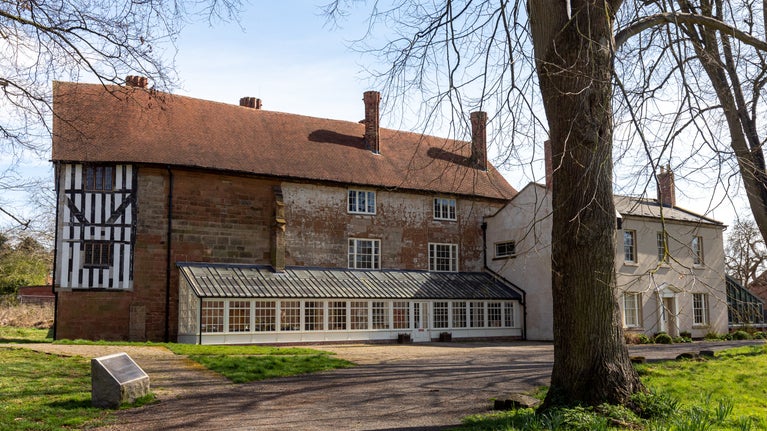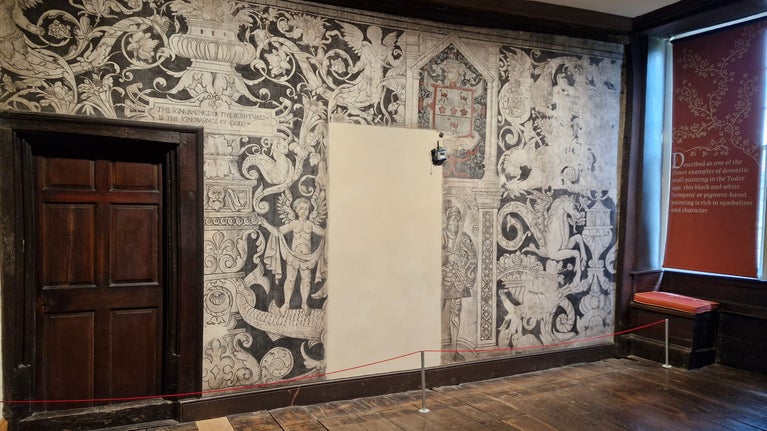Visiting the house at Coventry Charterhouse

Coventry Charterhouse is a Grade 1 listed heritage site dating back over 600 years. Nestled within a natural landscape of wildlife and greenery on the banks of the River Sherbourne, this characterful gem began life as a Carthusian monastery in the fourteenth century and now stands as a restored heritage site for everyone to discover and enjoy. Today you can visit the Prior’s Cell and the refectory – the only existing interior of a medieval Carthusian monastery in England, complete with medieval and Tudor wall paintings, the latter from the post-dissolution period when the Charterhouse was a private dwelling.
Priors Cell
On the ground floor is the Priors Cell, the accommodation for the leader of the community, elected by the monks for life. The prior was the only monk to have contact with the outside world. Take a look at the staircase in the corner which leads to the upper chamber.
Timeline
In the ‘orange room’ get a grasp on the layers of history with a timeline of the Charterhouse from 1381 to the present day. From the Carthusian Monks, Robert Dudley, the Wyley Family who preserved the wall paintings and to the people of Coventry.
Wall paintings
Coventry Charterhouse’s treasures, a trio of wall paintings of exceptional quality and national significance were re-discovered by Col Wyley in 1889.
On the first floor, you can find the ‘black and white’ painting. This style of painting has also been found in the corridor and covering the medieval painting. Spot the coat of arms of Sampson Baker who owned the Charterhouse from 1575.
In the adjoining room, discover the medieval painting, from the monastic period. The painting reached up to the original ceiling and was in the monks’ refectory where they ate in silence. Looking up at the ceiling you can see the later addition of a second floor, this was built post Dissolution and unfortunately destroyed the top part of the painting. But when you reach the second floor try to imagine one tall room stretching upwards. The medieval depiction of The Crucifixion is the only surviving monumental painting from an English Carthusian priory. Although incomplete due to building alterations, the paintings are some of the finest examples of medieval and renaissance art in England.
The third painting is a fictive tapestry found on the third floor, with decoration of scrolling leaves and flowers.

Be a monk
On the ground floor enjoy the sounds of nature; sounds that the monks would have heard as they prayed, read the scriptures and carried out their daily tasks. Pause and reflect in the mirror room on the silence and the life that the monks would have led.
Be a history detective
On the second floor you will find tantalising clues to the Charterhouse’s past. Have a look at the carved oak beams, repurposed during the period of extension from other parts of the site, or possibly other buildings. Spot the fireplace which is mounted by the altar stone from the priory church. You can also see fragments of the upper part of the medieval painting, re-used in the wall facing the garden. Look out for the octagonal wood pillar, and in the next room, possibly re-used from the original pentice wall round the monks’ cloister.
